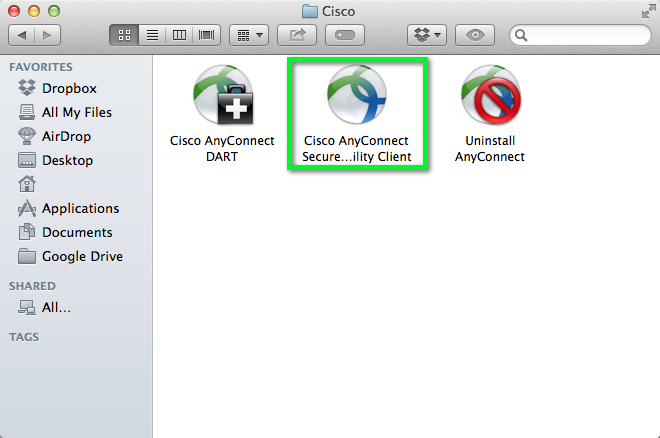Native Cisco VPN on Mac OS X. Confirmed working on OS X High Sierra. The proprietary CiscoVPN Mac client is somewhat buggy. It is possible to use the IPSec VPN software included with Mac OS X instead. This tutorial shows you how to migrate from CiscoVPN to the native OS X IPSec VPN by decrypting passwords saved in CiscoVPN PCF files.
Install the Cisco AnyConnect software to connect to Cornell's VPN service. You must have administrative privileges to install the software.
You must have administrative privileges to install the CU VPN software on your computer.Enter the following: https://todoomg.netlify.app/canon-pixma-mg2920-software-for-mac.html.
- Connect to https://cuvpn.cuvpn.cornell.edu. The SSL VPN Service Login dialog box will open.
- Enter the following:
Group: Leave this set to CornellVPN
(even if you will be using a departmental VPN after installing AnyConnect).User Name: Enter your Cornell NetID.
Password: Enter your Cornell NetID password.
- A Downloads page will appear after a successful login. It may take a few seconds to a few minutes to collect information about your system.
- If you see two tabs labeled Download and Automatic Provisioning, select . (It's okay if you don't see these tabs.)
- Click .
- Navigate to your default downloads folder and double-click the anyconnect dmg file, then double-click the anyconnect pkg file.
You may be asked to enter an administrative password for your computer. - Follow the on-screen instructions.
If asked, on the Installation Type screen, make sure VPN is selected and everything else is not selected. - If installing on macOS 10.13 (High Sierra) or higher, you may see System Extension Blocked alert. If you see this alert, follow the lettered steps below. Otherwise, continue with step 9 below.
- Click (or ). The System Preferences - Security & Privacy panel will open.
- Next to System software from developer 'Cisco' was blocked from loading click .
- Close the Security & Privacy Panel.
- Click or on the Extension Blocked dialog box.
- Close the installer.
| Developer(s) | Cisco Systems |
|---|---|
| Stable release |
|
| Preview release | |
| Operating system | Windows, Mac OS X 10.4 and 10.5, Solaris UltraSPARC, Linux (Intel)[3] |
| Size |
|
| Available in | English |
| Type | VPN software |
| License | Proprietary |
| Website | www.cisco.com/c/en/us/products/security/vpn-endpoint-security-clients/index.html |

Cisco Systems VPN Client is a software application for connecting to virtual private networks based on Internet Key Exchange version 1.
On July 29, 2011, Cisco announced the end of life of the product. No further product updates were released after July 30, 2012, and support ceased in July 29, 2014.[4] The Support page with documentation links was taken down on July 30, 2016, replaced with an Obsolete Status Notification.[5]
Availability and compatibility[edit]
The software is not free but is often installed on university and business computers in accordance with a site-license. As with most corporate licenses, administrators are allowed to freely distribute the software to users within their network.
The open-source vpnc client can connect to most VPNs supported by the official client.

VPN Client 4.9.01.0230 beta added support for Mac OS X 10.6.[6] Stable version 4.9.01.0180 appears to lack that support; 4.9.00.0050 explicitly did not support versions of Mac OS X later than 10.5.[7] Update microsoft apps in mac.
VPN Client 5.0.07.0290 added support for 64-bit versions of Windows Vista and Windows 7.[8]

Security[edit]
Cisco Vpn Software For Mac Pro
The client uses profile configuration files (.pcf) that store VPN passwords either hashed with type 7, or stored as plaintext. A vulnerability has been identified,[9] and those passwords can easily be decoded using software or online services.[10] To work around these issues, network administrators are advised to use the Mutual Group Authentication feature, or use unique passwords (that aren't related to other important network passwords).[9]
See also[edit]
- Cisco ASA, the product line that replaced Cisco VPN Concentrator on the server side
Cisco Vpn Software For Mac Pc
References[edit]
- ^VPN Client release notes
- ^Cisco VPN Client v4.x .. Mac OS
- ^'VPN Client Homepage'.
- ^https://www.cisco.com/c/en/us/products/collateral/security/vpn-client/end_of_life_c51-680819.html
- ^[1]
- ^Release Notes for VPN Client, Release 4.9.01.0230 Beta for Mac OS X
- ^Release Notes for VPN Client, Release 4.9.00.0050 for Mac OS X, Revised: May 21, 2010, OL-11179-04
- ^Release Notes for Cisco VPN Client, Release 5.0.07.0290
- ^ ab'Cisco Security Notice: Cisco IPsec VPN Implementation Group Password Usage Vulnerability'.
- ^'Cisco Systems VPN Client Group Password Decoder'.